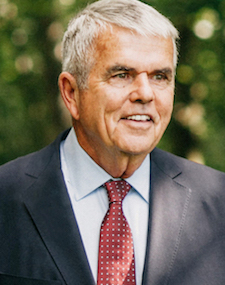This commentary is by Don Keelan, of Arlington. He was assigned to Camp David from November 1957 to June 1960 as a member of the U.S Marine Corps Security Detachment.
For over 150 years, Vermont has been a destination for second-homeowners. The state has always been the place to come in the summer. Since the 1960s, the Green Mountains have been the destination for folks who take advantage of Vermont to leaf-peak, hunt, hike, ski, snowmobile and mountain bike.

Don Keelan
Second homes can range in size, shape, and cost: from a camp in the woods to a home on one of Vermont’s numerous lakes, a mountain house at Stratton, and places in between. A charismatic second home in Manchester is still used today: Robert Todd Lincoln’s Hildene. This 24-room mansion on 412 acres was built in 1905, and President Lincoln’s son used it often until 1926. Now, it is a historic site.
In the Catoctin Mountains of Maryland, there is another second home. It is even more unusual, and since April 1942, has had “15 owners.” The home, located on about 150 acres, comes with a one-hole, par-three golf course, a pool, bowling alley, horseback riding trails, free-standing library, tennis facilities, movie theater, an inter-faith chapel, and even a state-of-the-art emergency medical-surgical room. Access is by automobile or by helicopter. The nearby landing area is watched over by a full-time fire department and flight operations personnel.
The property also comes with a unique feature: a communication system that can reach anywhere in the world or beyond.
The downside of this second home is its annual operating budget of close to $10 million, which does not include the 160-person security detachment required to secure the house, its occupants and surrounds.
You may realize that the home described is officially referred to as The Naval Support Facility-Thurmont. We know it by the name given to it in 1953 by “former owner” President Eisenhower as Camp David (named after his father and grandson).
For Ike, the existing name Shangri-La was a bit too haughty. Thus, the change, even though he was aware that his predecessor, President Franklin D. Roosevelt, assigned the name U.S.S Shangri-La in June 1942.
That month, for the first time, FDR used his second home at the cost of $18,000. He insisted that no more than $10,000 be spent.
Most presidents use Camp David on weekends. Since 1942, there have been 4,108 weekends, which is noteworthy when you see the wide disparity in Camp David’s use by its 15 “owners.” This use raises the question: Should the facility be sold or turned into a museum?
For comparison purposes, President Trump visited Camp David on 15 occasions, or every 14th week while in office. Another four-year president, George H. Bush, went to the retreat 124 times, or nearly every two weeks. President Nixon used Camp David more frequently than any other president: 160 visits, or just under every other weekend.
Since Camp David was founded, only the president can use the camp; but in recent times, the president’s staff and family are allowed to visit even while the president is away.
When President Lyndon Johnson was in office he would never allow Vice-President Hubert Humphrey to visit Camp David. Only near his death did the past vice president request from President Carter to visit the retreat, and it was granted.
Ever since the summer of 1942, when FDR had Prime Minister Winston Churchill as a guest (to plan the D-Day invasion) through President Biden, world leaders have been brought to Camp David for meetings. The location, security, privacy, and bucolic setting are conducive to discussing world affairs. This, and the fact that the sitting president can leave “the fishbowl” of the White House, is why Camp David, 65 miles from the White House, should be maintained as a second home.
Happy 80th anniversary to the presidential retreat this month.


